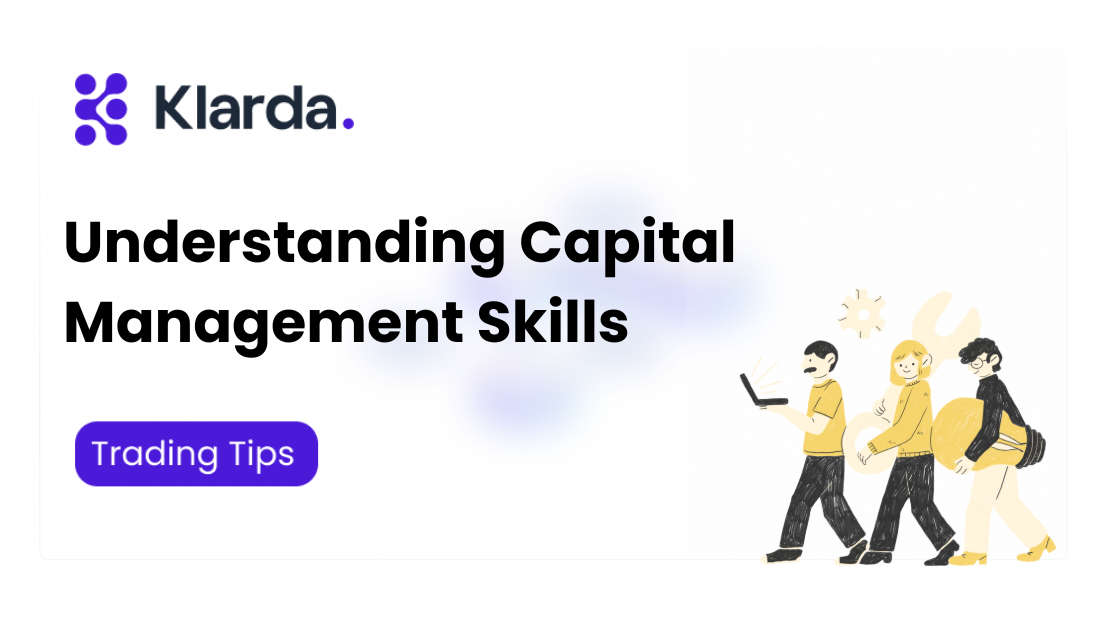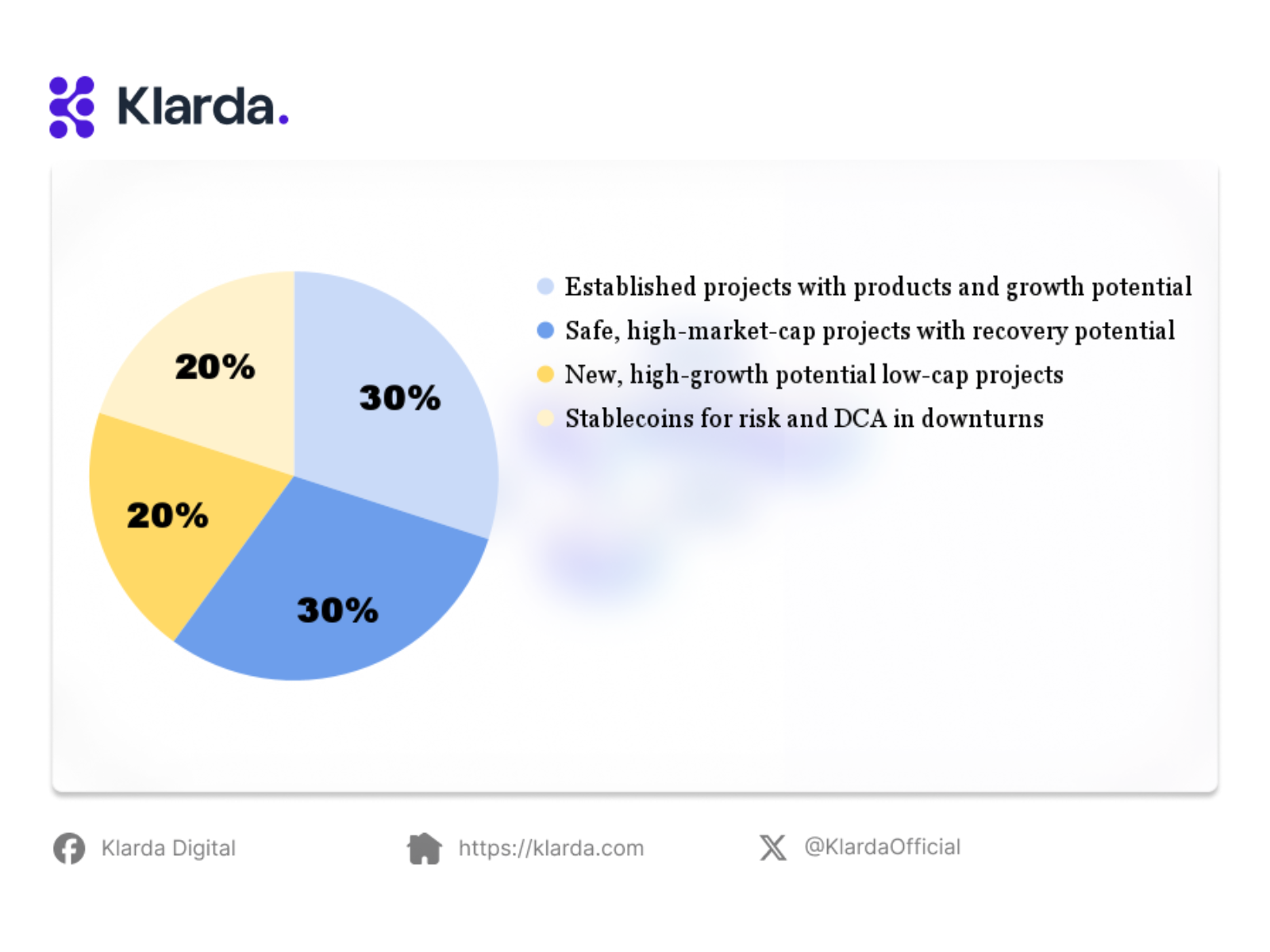Capital Management Skill
One of the main reasons people lose money in cryptocurrency trading is a lack of capital management skills. So, what are they?
When engaging in crypto trading, capital management skills are crucial for maintaining a calm mindset and achieving positive results. Not everyone has the expertise to manage capital effectively. Therefore, today Klarda will help you gain more knowledge about these skills.

KEY TAKEAWAY
- Capital management involves controlling your account balance to avoid major losses and secure profits. It helps you adapt and thrive in a tough, competitive financial market.
- Capital management ensures your survival in the market by avoiding risks that could lead to major losses. Its goals are to protect your capital, generate income, and maximize profits.
- Five ways to develop capital management skills are: don't put all your eggs in one basket, quantifying risk on each trade, allocating percentages for taking profits, allocation based on risk appetite, and always averaging the price.
WHAT IS CAPITAL MANAGEMENT?
Capital management means you must control the amount of money in your account to avoid significant losses while also securing certain levels of profit in your trades. Knowing how to manage capital helps you adapt and survive in this harsh and highly competitive financial market.
WHY WE NEED CAPITAL MANAGEMENT SKILLS
The main goal of capital management is to ensure you stay in the market. In high-risk environments, it's crucial to steer clear of risks that could force you out. The next goal is to generate extra income, and ultimately, to maximize your profits.
Failures often result from investing all capital into a single trade and continuing with the same or even larger amounts. Many who lose try desperately to climb out of the deep hole they've dug themselves into. Effective financial management helps you prevent creating problems from the start.
FIVE STRATEGIES TO DEVELOP CAPITAL MANAGEMENT SKILLS
To avoid unfortunate losses due to a lack of capital management skills, here are some methods we have gathered:
Spread your risks to avoid losing everything at once
Most professional crypto investors spread their capital across various assets with different risk levels rather than focusing on just one. This approach reduces the risk of significant losses while maintaining the potential for overall portfolio growth.
For example, you might allocate:

- 30% to established projects with products and growth potential.
- 30% to safe, high-market-cap projects with recovery potential.
- 20% in new, high-growth potential low-cap projects.
- 20% in stablecoins for risk and DCA in downturns.
Quantifying risk on each trade
Limit your risk per trade to no more than 2% of your total capital. This principle is widely used by experienced investors to manage their risk. For instance, if you have $100,000 in total capital, you should not risk more than $2,000 on any single trade.
Many new traders ignore this rule, which can quickly lead to significant losses. While 2% might seem conservative, it is a proven strategy to safeguard your capital from market volatility.
Allocating percentages for taking profits
Profit-taking is essential for any investor. A common mistake is trying to sell at the peak, leading to hesitation and potential losses if prices keep rising.
Since predicting market moves is impossible, discipline is crucial.
Ways to take profits:
- Single Target: Set a profit goal and take profits once you reach it.
- Multiple Levels: Take profits in stages. For example, sell part of your position when the price doubles, hold the rest for further gains, and set additional targets as the price increases.
Use limit orders or adjust stop-loss levels to avoid selling too early and protect your gains.
Allocation based on risk appetite
Risk appetite indicates how much risk an investor is willing to take in cryptocurrency and gauges their comfort with market fluctuations.
Identifying your risk appetite and allocating capital accordingly helps you choose a suitable strategy, avoiding significant losses or lower-than-expected returns.
Low Risk Appetite: Investors focus on preserving capital rather than seeking high returns. They might invest in assets with low volatility, such as Bitcoin (BTC), Ethereum (ETH), or stablecoins.
Medium Risk Appetite: Cautious investors prefer assets with low to medium volatility. A common allocation is 80% in BTC and 20% in altcoins.
High Risk Appetite: Investors seek high returns and are open to significant risk. They might invest in small-cap altcoins with high potential or follow trends for quick gains.
Always averaging the price
Dollar Cost Averaging (DCA) is a strategy where you buy an asset at different prices over time to reduce risk and avoid emotional trading. It's more suited for long-term holders than short-term traders. Choose coins with high market capitalization, a transparent team, strong market presence, and a solid roadmap.
In summary, capital management skills are crucial for traders to minimize risks and maximize potential benefits. For newcomers, applying these skills can be challenging. However, with the Klarda app, you can rely on timely tools and support to easily and conveniently address your concerns.
Updated 8 months ago